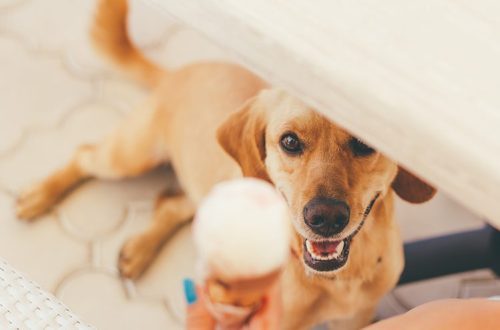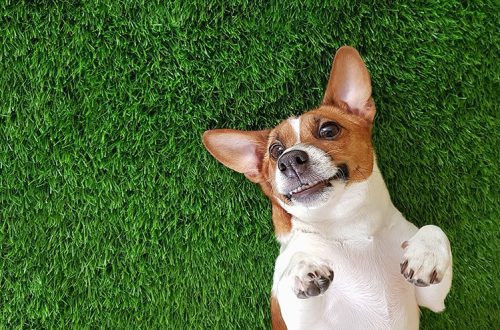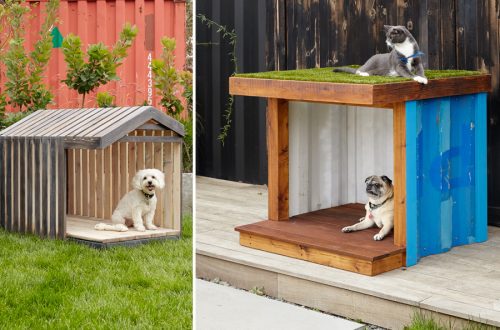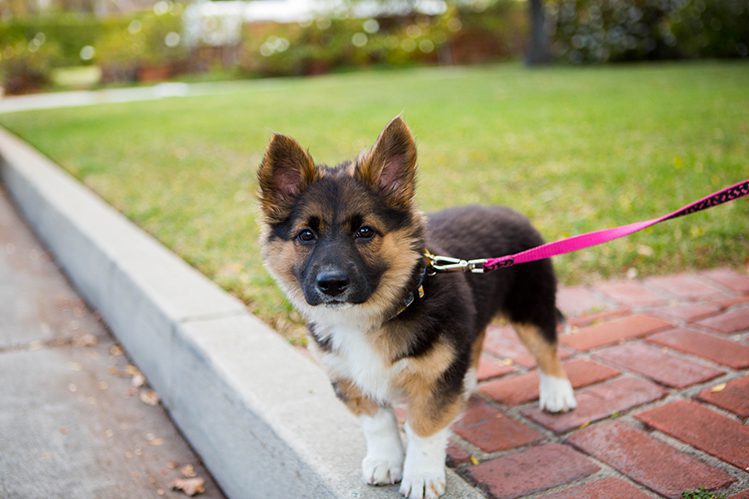
Meriv çawa ji bo meşa yekem bi kuçikek re amade dike?
The first walk with a puppy causes quivering feelings in every owner. You never know how the baby will react to the outside world and what kind of reaction you should prepare for. What if the puppy gets scared of a passing car? Suddenly will pull the leash? What if he hides under the bench and forgets all the commands? But locking a four-legged friend at home will not work either. Your puppy’s first outdoor walks will help him develop his social skills and physique. So let’s put aside our fears! Our article will help you properly prepare for your first walks!
The immune system of babies is not yet fully developed, and therefore early walks and contact with other animals can be dangerous for their health.
For the safety of the puppy, you will first have to undergo a vaccination course, according to an individual schedule.
The first vaccinations are carried out by breeders – usually at 8 and 12 weeks (there are manufacturer’s recommendations for each vaccine). A responsible breeder will never sell a puppy without vaccination: at least the first one.
It is very important not to rush to immunize your pet. If you decide that all vaccinations can be done at once, and the next day you go for a walk, then you are deeply mistaken. Recall the approximate vaccination schedule.
The first comprehensive vaccination is performed at the age of 2,5 – 3 months of the puppy’s life.
The second vaccination is about 2 weeks after the first.
The next 3-4 weeks the puppy is in quarantine. During this period, you need to be very attentive to the well-being of the pet. Be sure to monitor his behavior, the condition of the mucous membranes, skin and coat, and appetite.
If there were no complications during the quarantine period, then you have a healthy pet with a fully formed immune system. Most often, the first walk of a puppy after vaccination occurs at the age of 3,5-4 months.
The first walk of a puppy after vaccination and quarantine usually falls on the period from 3,5 to 4 months. Yes, it’s long. But security is not worth the risk.

Quarantine is a great opportunity to practice the first commands and prepare the puppy for walking on a leash and in a muzzle.
Before delving into the world of raising a puppy, discuss key points with your breeder in advance. He will tell you how to find an approach specifically for your dog and help you avoid popular mistakes that take time, effort and money.
How to prepare a puppy for the first walk?
1. During quarantine, you can walk with the baby if you have it in your arms. The duration of such outings should not be longer than 15-20 minutes. So the puppy can get used to the noise and smells of the yard.
2. Starting from two months, start teaching your pet a basic set of commands (“stand”, “sit”, “lie down”, “fu”, “no”, “to me”, “next”). Lessons must be daily. Do not move on to the next command until the student has mastered the first. In general, this stage of training lasts one to two weeks. And in the future, you just hone the skill of executing commands.
3. The next step is to train the puppy to the collar.
4. After your pet gets used to the collar, introduce him to the leash. Usually, several days pass between it and the previous stage.
In the early days, it is enough to “walk” the baby on a leash around the house. So he will understand that his new accessories do not carry any danger, that they do not put pressure on him and walking is not scary!
5. The final touch is to introduce the puppy to the muzzle. To start, leave your puppy muzzled for 10 minutes a day. Don’t forget to comfort him and give him treats. While your baby is very tiny, there is no need for a muzzle. But in the future, an early acquaintance with a muzzle will only play into your hands. Teaching adult dogs to muzzle is much more difficult.
If possible, the first stages of accustoming to walking are best worked out on your own site or in the country.
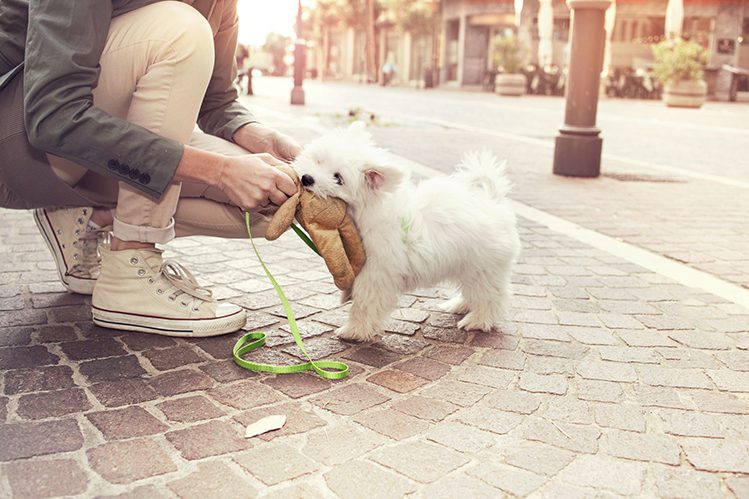
- The first “independent” exit of the baby into the world should take place in full gear. But besides having a leash and a muzzle, don’t forget to bring your pet’s favorite toy and a treat.
- Make sure that the puppy does the entire route on his own.
- At first, take the puppy out of the house in your arms and place it on the ground in a suitable, calm place. Some puppies take longer to get used to the elevator and stairs. Others are less. Discuss this with your breeder.
- Gradually teach your pet to go up and down on his own. He needs to get used to moving up stairs and elevators.
- Be sure to encourage your baby. Do not pull on the leash sharply and strongly.
- Don’t wrap a leash around your wrist or a tape measure around your fingers. With a strong jerk, you risk serious injury.
- Do not be nervous. The puppy will immediately catch the tension in the air and refuse to go anywhere.
- For the first weeks, walk close to home, in a quiet and peaceful place without cars and crowds of people. Keep practicing old commands and learning new ones.
- Do not allow food, sticks and other objects to be picked up from the ground: this can lead to poisoning, parasite infestation, infections and other unpleasant moments. Take your toys with you.
- In the summer, do not walk in direct sunlight, so as not to provoke overheating.
- When meeting other dogs or cats, don’t get nervous or get out of the way. Just stop and let the puppy see another pet from a distance. If aggression does not follow in your direction, continue the route. So the baby will learn social communications.
- Allow your pet to play with other puppies, but be sure to ask permission from their owners first. Visit specialized dog walking areas, play and meet other like-minded people – all this will help the puppy to socialize.
- When meeting with children, remain calm, but be careful and control any contact. If a child frightens a puppy or hurts, then in the future, an adult dog will see a source of danger in children.
- Walk your puppy before feeding. Then he will be more interested in getting treats, which means that training will be more efficient. Active games and walks are best not carried out on a full stomach.
- Don’t let your puppy go to the toilet on the sidewalk. And if an incident occurs, remove the feces in a special bag. It is necessary to be responsible and take care that the puppy and its waste products do not bring discomfort to others.
- Pay attention to your dog and praise him for good behavior. Put your phone away while walking and spend this time playing games together. The puppy must understand that you are his best friend, with whom it is fun and interesting. Then the process of education will be a pleasure for both you and the puppy.
The duration of the first walks should be no more than 20 minutes, and the multiplicity should be about 5 times a day. As the pet grows older, the duration of walking can be increased, and their number can be reduced from day to day.
Preparing a puppy for walking is a very interesting process. If you approach him responsibly, you will also establish a close bond with your pet. We wish you good walks.



